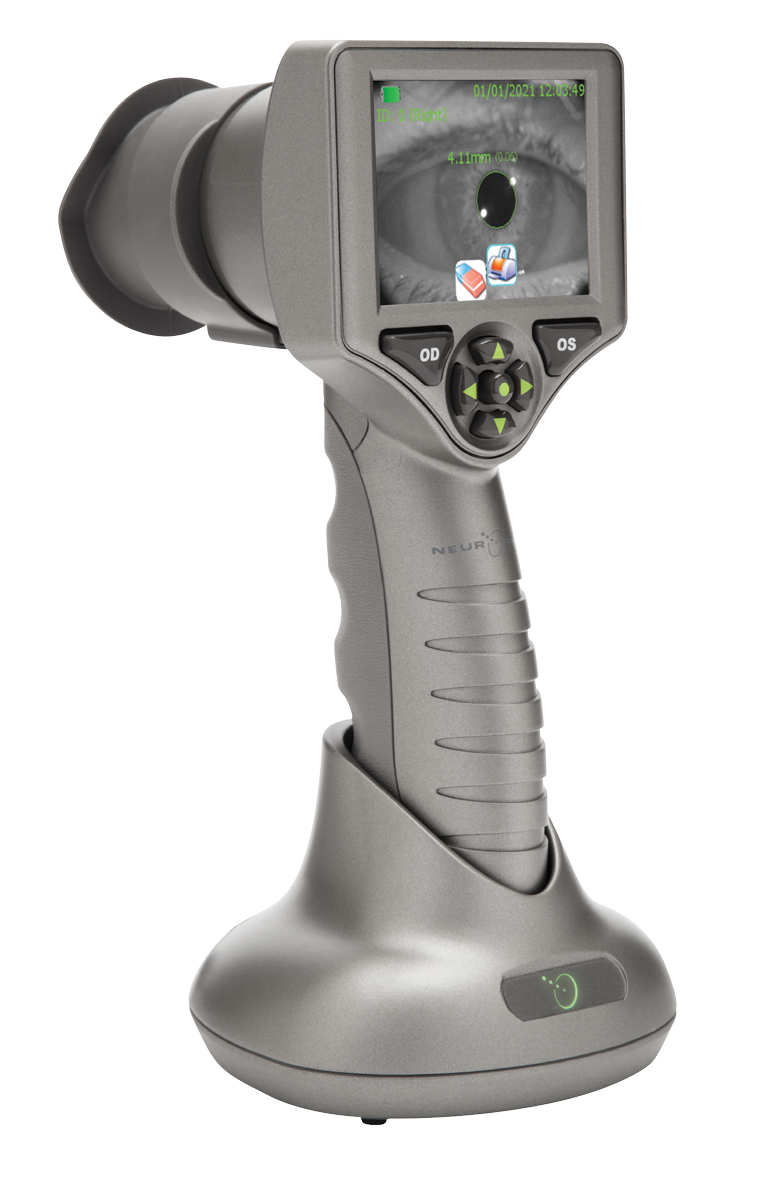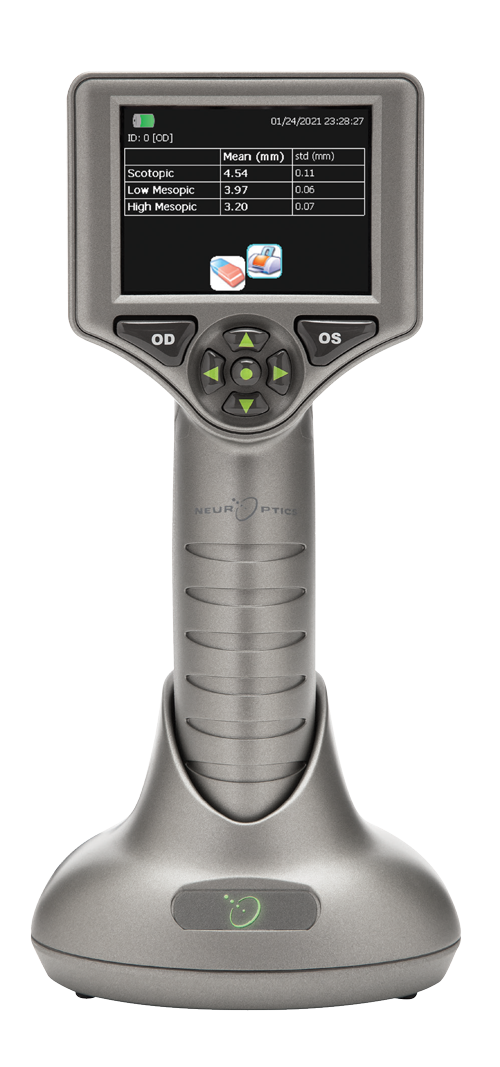
Enables clinician to make best possible medical decision for LASIK and premium IOL patients based on pupil size, stated daily activities, and patient preferences.
Portable, battery operated, hand-held device
Accurately measures pupil diameter (±0.03 mm)
“Dark” setting, 2-second measurement
“Variable” setting measures scotopic, low mesopic, and high mesopic pupil sizes in one 12-second sequence to simulate light conditions patient may experience in daily life
Durable, ergonomic design
Infrared camera, high precision optics, processor and LED light source

“The NeurOptics Pupillometer…is very compact, simple to use, reasonably priced and gives accurate automatic readings to 0.1 mm. An accurate instrument for measuring the scotopic pupil is essential for refractive surgeons.”
–James Salz, M.D.

VIP Technology Produces Reproducible Measurement Results
Testing has shown that the NeurOptics Pupillometer is consistent from unit to unit and operator to operator. In fact, the NeurOptics Pupillometer has the highest accuracy and lowest error of all commercially available pupillometers1, while at the same time being the most economical hand-held infrared device.
The key to the reproducibility in measurement is the use of VIP (Vertex Invariant Pupillometry) technology developed by NeurOptics. This system compensates for the approximate 12 mm range in vertex distance2 that may lead to inaccurate pupil measurement (error up to 20%), producing accurate measurements that are not affected by vertex distance3.
Simple to Use and Operate
One-button activation
No calibration by the user
Data is stored on the device and can be recalled and/or printed
Video of the measurement can be played on the device’s screen
References:
1. Schallenberg M, Bangre V, Steuhl KP, Kremmer S, Selbach JM., Comparison of the Colvard, Procyon, and Neuroptics pupillometers for measuring pupil diameter under low ambient illumination. J Refract Surg. 2010 Feb;26(2):134-43.
2. Distance from the front surface of the eye to the back of a lens or optical device.
3. The pupil is never at rest, and therefore a single, static, measurement is unlikely to be an accurate assessment of a pupil’s true amplitude or range of diameter. To compensate for pupillary unrest, NeurOptics employs a dynamic measurement system which captures 30 pupil positions over an approximate 2-second scanning period, thus producing the weighted average pupil size and standard deviation.


